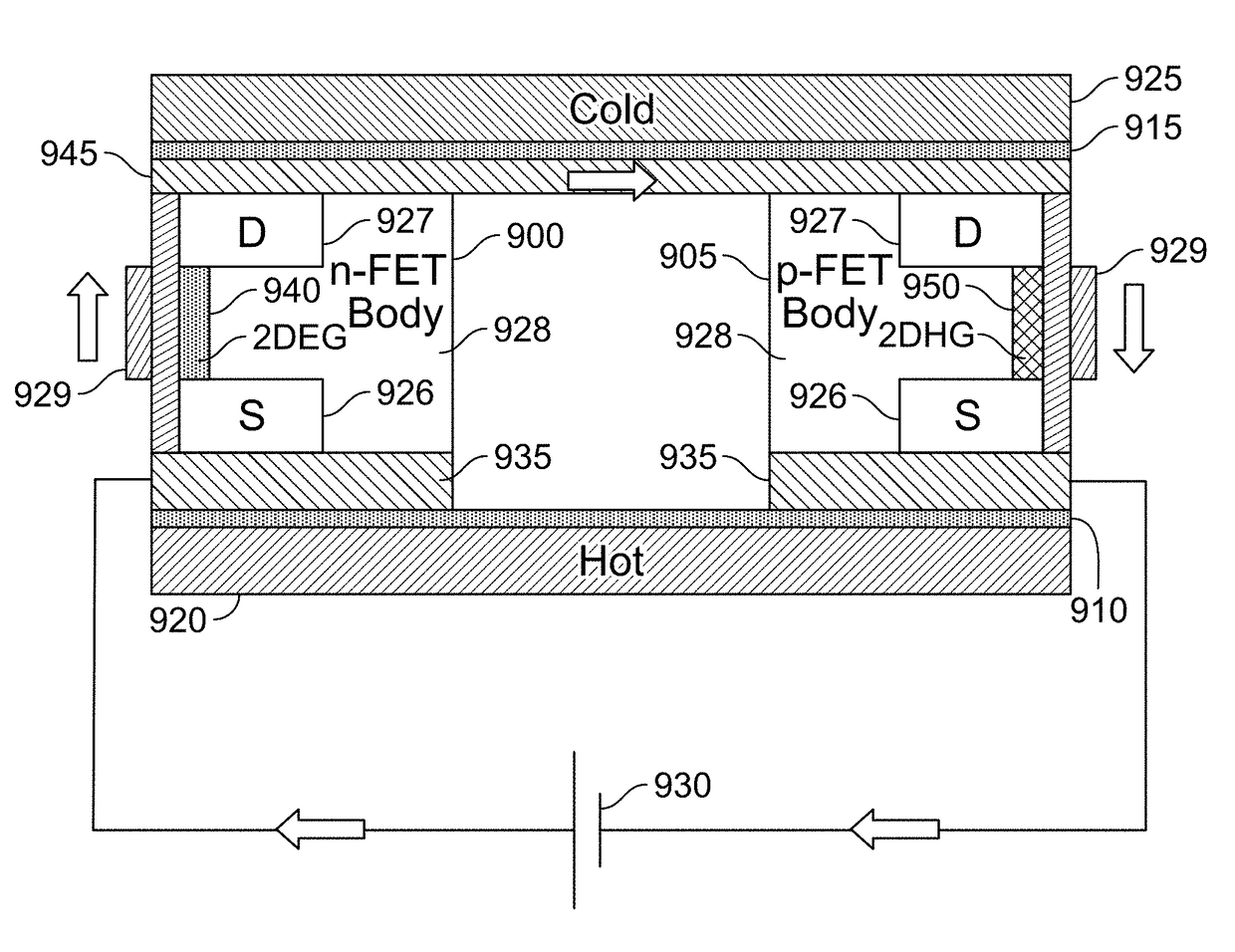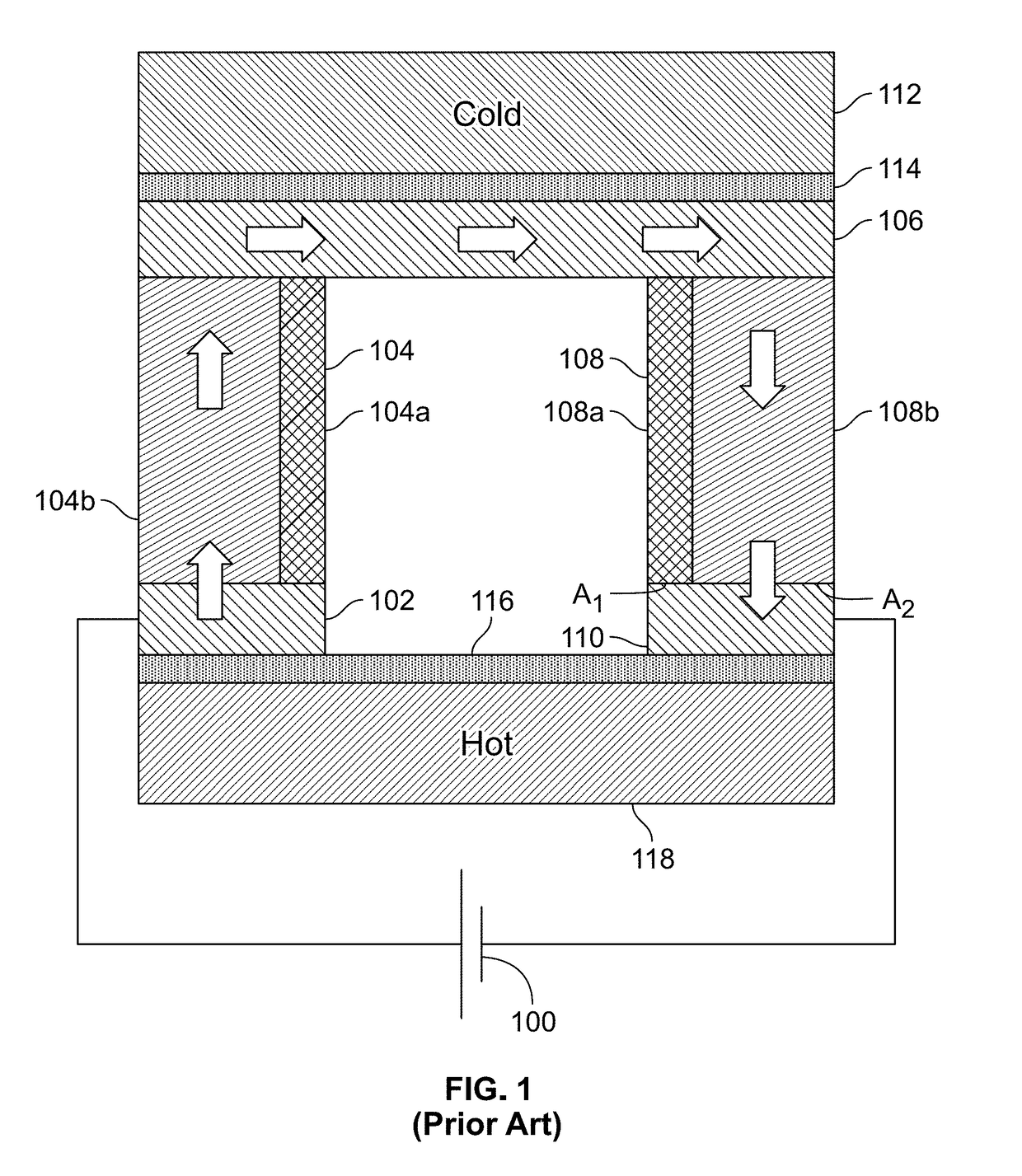Method and apparatus of enhanced thermoelectric cooling and power conversion
- Summary
- Abstract
- Description
- Claims
- Application Information
AI Technical Summary
Benefits of technology
Problems solved by technology
Method used
Image
Examples
Embodiment Construction
[0032]FIG. 1 provides a schematic view of a typical thermoelectric cooling arrangement in which an electric current from source 100 passes from metal contact 102 through thermoelectric element 104, then through metal contact 106, then through thermoelectric element 108, and then through metal contact 110 and back into source 100. Heat is absorbed from cold-side metal plate 112 through thin insulating sheet 114 into metal contact 106, which defines the contact region between the respective thermoelectric elements. Heat that is evolved at contacts 102 and 110 passes through thin insulating sheet 116 into hot-side metal plate 118, from which it is dissipated by convection and / or by radiation.
[0033]As shown in the figure, each of the thermoelectric elements is partitioned into a subelement 104a, 108a having an area in cross section to the direction of current flow A1 and a subelement 104b, 108b having an area in cross section to the direction of current flow A2. Let us assume that for t...
PUM
 Login to View More
Login to View More Abstract
Description
Claims
Application Information
 Login to View More
Login to View More - R&D Engineer
- R&D Manager
- IP Professional
- Industry Leading Data Capabilities
- Powerful AI technology
- Patent DNA Extraction
Browse by: Latest US Patents, China's latest patents, Technical Efficacy Thesaurus, Application Domain, Technology Topic, Popular Technical Reports.
© 2024 PatSnap. All rights reserved.Legal|Privacy policy|Modern Slavery Act Transparency Statement|Sitemap|About US| Contact US: help@patsnap.com










